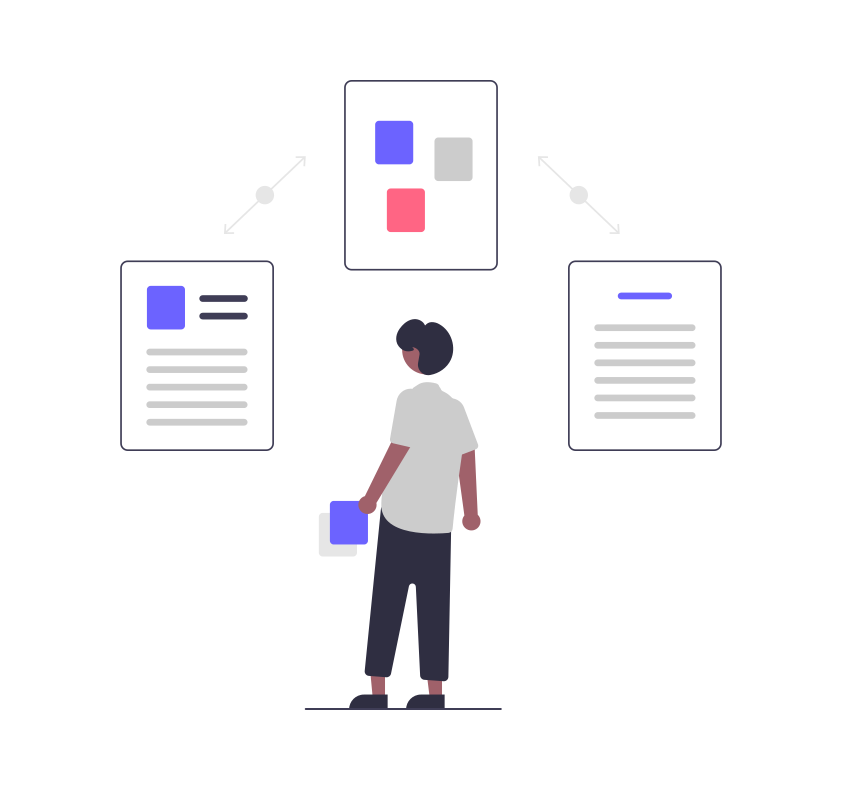Lead nurturing is no longer a simple email drip campaign that aims to keep your brand top of mind. In 2024, lead nurturing has evolved into a complex, multi-channel strategy driven by AI, hyper-personalization, and real-time data insights. Companies that excel in lead nurturing not only drive better conversions but also improve customer retention and lifetime value. Here’s how you can maximize your lead nurturing efforts in 2024 to stay ahead of the curve.
Reimagining the Lead Nurturing Journey
Lead nurturing is about more than just guiding potential customers from awareness to decision. It’s about building a long-term relationship based on trust, value, and consistent engagement. In 2024, the lead nurturing journey will be more personalized and dynamic, adapting in real-time to customer behaviors and preferences.
-
Adapt to Changing Customer Expectations: Modern customers expect more than just generic marketing messages. They want relevant, timely content that addresses their specific needs and pain points. A well-crafted lead nurturing strategy takes into account where the prospect is in their buying journey and tailors the messaging accordingly.
-
Dynamic and Adaptive Content: Leverage AI-powered content management systems to dynamically adjust content based on user behavior and engagement patterns. For instance, a user who frequently visits pages about a particular product should be targeted with personalized content and offers related to that product.
Utilizing Multi-Channel Engagement
Gone are the days when email was the sole channel for lead nurturing. In 2024, successful lead nurturing requires a robust multi-channel approach that includes social media, content marketing, SMS, and direct mail, among others.
-
Cross-Channel Consistency: Ensure that your messaging is consistent across all channels. This means that your social media posts, emails, and other communications should all have a cohesive voice and reflect the same value propositions and branding.
-
Timely and Relevant Touchpoints: Use AI and automation to send timely messages that align with where the lead is in their journey. For example, a prospect who just signed up for a webinar should receive follow-up content related to the webinar topic.
Leveraging AI for Hyper-Personalization
Artificial Intelligence (AI) and Machine Learning (ML) are game changers for lead nurturing in 2024. They allow marketers to move beyond basic segmentation and target leads with precision and relevance.
-
Predictive Lead Scoring: Implement predictive lead scoring models to identify which leads are most likely to convert. These models use historical data and behavioral insights to score leads based on their likelihood to take a desired action, such as signing up for a demo or making a purchase.
-
Personalized Recommendations: Use AI to provide personalized content recommendations. AI algorithms can analyze a lead's past behavior to suggest the next best piece of content, whether it’s a blog post, a white paper, or a case study.
Optimizing the Use of Intent Data
Intent data is a critical component of modern lead nurturing strategies. It provides insights into what potential customers are actively researching or considering, allowing you to tailor your nurturing efforts accordingly.
-
Behavioral Triggers: Set up automated workflows that are triggered by specific actions a lead takes, such as downloading a white paper, attending a webinar, or frequently visiting certain pages on your website. These triggers should activate personalized messages or offers that move the lead closer to conversion.
-
Third-Party Intent Data: Supplement your first-party data with third-party intent data to gain a deeper understanding of your prospects’ needs and interests. This can help you identify new opportunities and refine your lead nurturing strategy.
Prioritizing Customer Experience Throughout the Funnel
A successful lead nurturing strategy doesn’t stop at conversion; it extends throughout the entire customer lifecycle. Retention is as crucial as acquisition, and in 2024, customer experience will be the differentiator.
-
Feedback Loops: Create continuous feedback loops with your customers to understand their evolving needs and preferences. Use this feedback to improve your products, services, and marketing strategies.
-
Post-Sale Engagement: Engage with customers after the sale through personalized onboarding, regular check-ins, and exclusive content or offers. This helps to build loyalty and encourages repeat business.
Implementing Automation for Efficiency and Scale
Marketing automation tools have become indispensable in managing lead nurturing efforts, especially as customer journeys become more complex and multi-faceted.
-
Automated Workflows: Develop sophisticated workflows that automate routine tasks such as follow-up emails, content distribution, and lead scoring. This not only improves efficiency but also ensures that no leads fall through the cracks.
-
Scalability: As your business grows, your lead nurturing efforts should scale seamlessly. Choose automation tools that integrate easily with your existing marketing stack and can handle increased volume without compromising on personalization or quality.
Focusing on Data-Driven Decisions
Data is at the heart of effective lead nurturing. In 2024, successful marketers will be those who can leverage data to make informed decisions and continuously refine their strategies.
-
Analytics and Reporting: Use advanced analytics tools to measure the effectiveness of your lead nurturing campaigns. Look at key metrics such as open rates, click-through rates, conversion rates, and customer lifetime value to gauge success and identify areas for improvement.
-
Continuous Optimization: Implement a continuous optimization strategy that involves regularly testing and refining your nurturing tactics. Use A/B testing to determine what works best for different segments and adjust your strategy accordingly.
Conclusion
Lead nurturing in 2024 is set to become more sophisticated, leveraging the latest in AI, automation, and data-driven insights. By focusing on hyper-personalization, multi-channel engagement, and a customer-first approach, businesses can not only improve their conversion rates but also enhance customer retention and build long-term relationships. Stay ahead of the competition by adopting these advanced strategies and continuously refining your approach to meet the ever-evolving needs of your customers.


